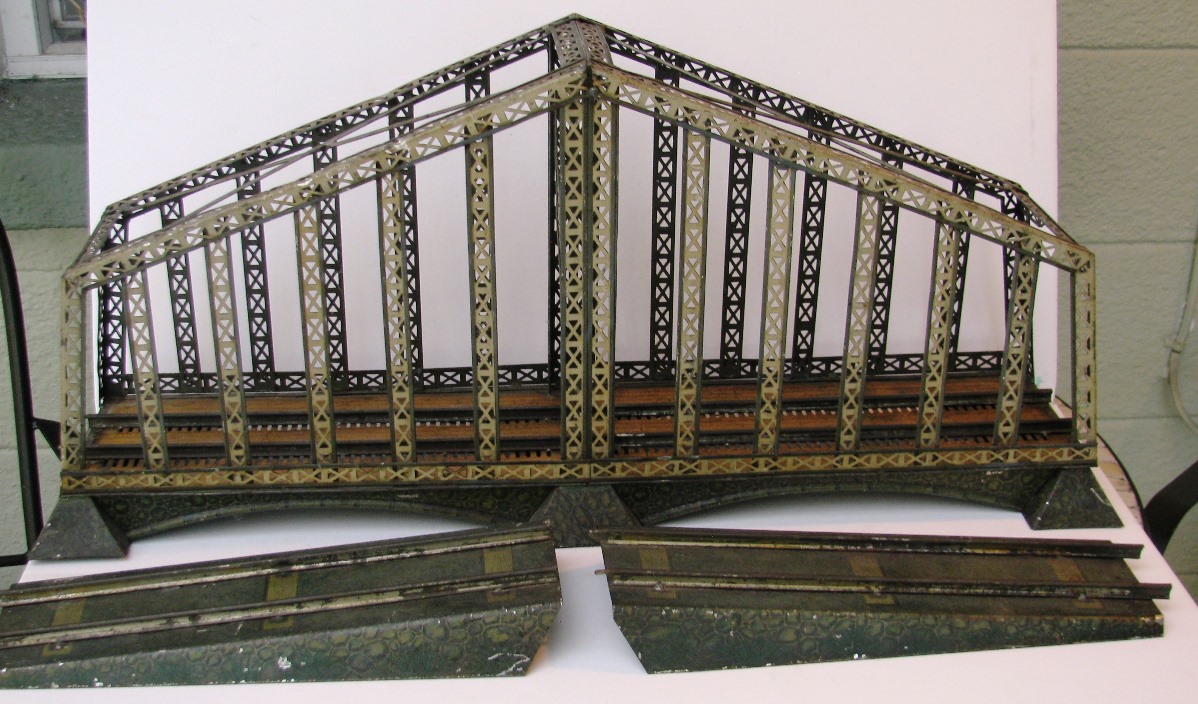98 Bridge and friends - The 98 was always the basic bridge, it had two approaches and one trestle. The No. 99 Bridge was always the same except it had two trestles or spans. When the bridge was made for One gauge track, it was numbered 98-1, when made for electric track it was numbered 98-3, and if the bridge was for One gauge electrical track it was numbered 98-1-3. Bridges built to use with wide gauge track were numbered 99-2-3. The 99 meant 2 spans, the '-2' meant wide gauge track, the '-3' meant it had electric track, of course wide gauge bridges only came with two spans and electric track. A No. 99-3 would have two spans and be for 0 gauge mechanical track, and you thought the numbers were confusing.
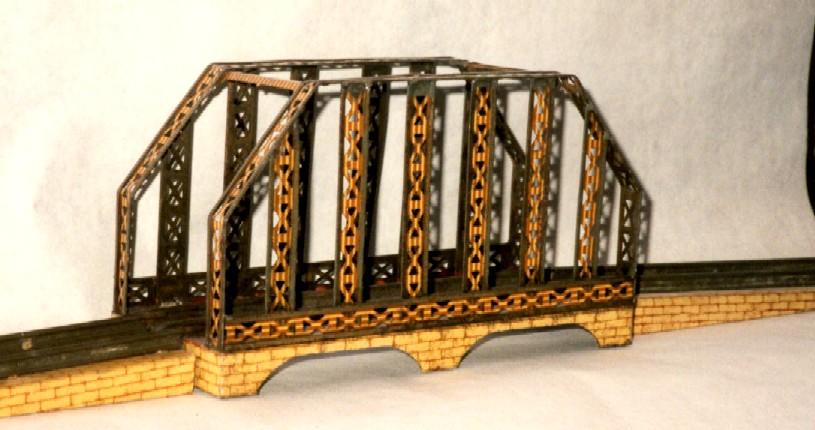
Circa 1907-1910- Bridges never had any numbers printed on them just the numbers from the catalogs, you should know this is a No. 98. To date this bridge notice the plain yellow brick litho on the approaches, the butterscotch litho on the girders and look closely at the two supporting braces on the top of the bridge that keep it from folding over are strips of butterscotch lithograph. Another property that changed over time was the height of the bridge, count the number of patterns in one of the supporting ties. This bridge has six and is six inches tall, earlier versions have only five and are 5.5 inches tall. This piece first started appearing around 1907-08. Below is the same bridge except the girders are red litho and the center span has RED brick for a base.
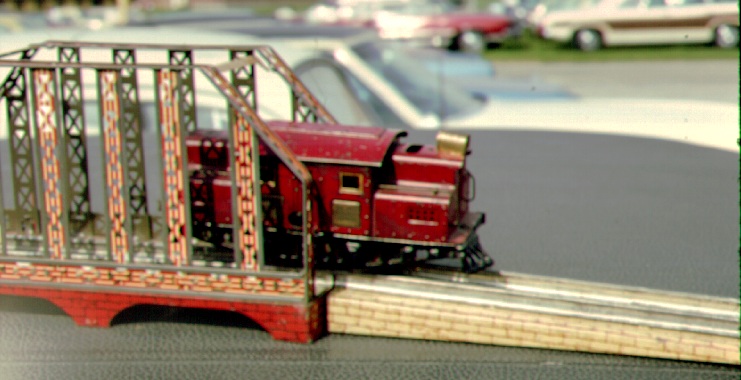
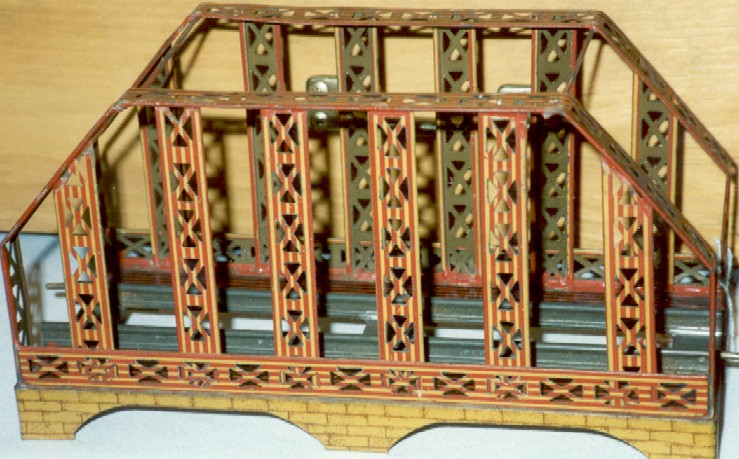
Circa 1904-1906 - Here's a closeup of the single span from what would appear to be the same bridge, but look at the corner braces at the top of both sides of the bridge. They are just a metal stripe, making this an earlier bridge.
Above and below are pictures of a No. 99 bridge. This one would appear to be very early (Circa 1903-04) as it has the painted base which has been embossed and plain wire separators at the top.
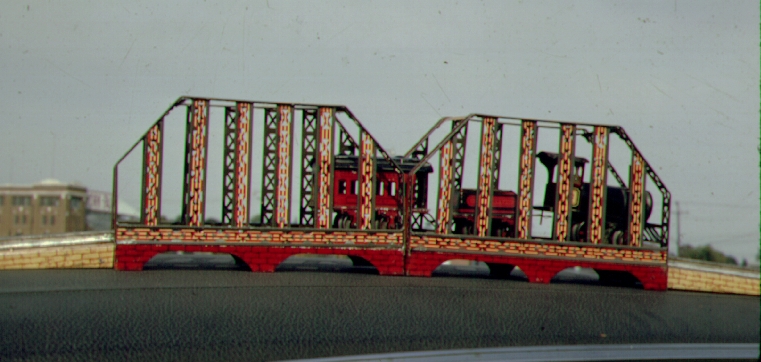
Circa 1906-1909 - Same bridge again, but this one is technically a No. 99 with two center spans. Below is the 98 with all red approaches.
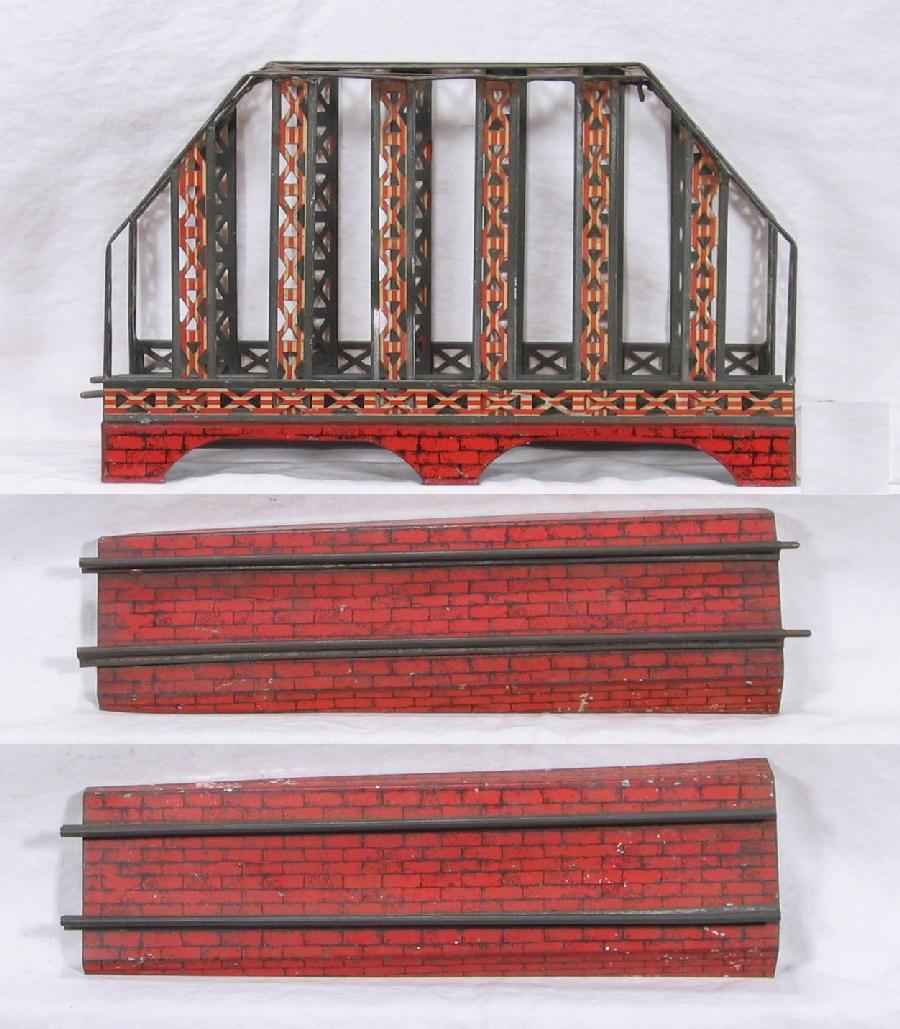
Circa 1909-1910 - This is a One gauge bridge and though not as obvious it has two spans, so its number would be 99-1. The same bridge was made for three rail track and would be numbered 99-1-3.
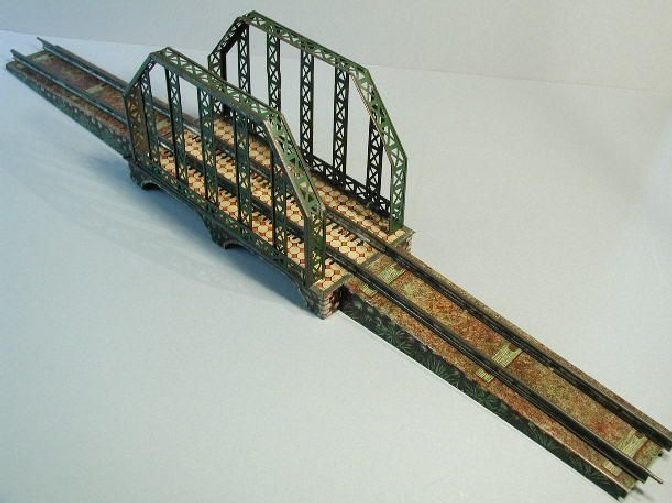
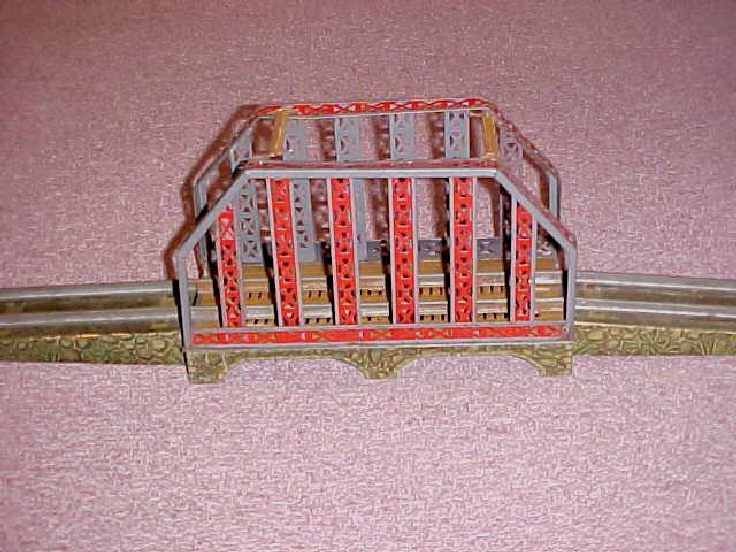
Circa 1910-1912 - Another No. 98, Note this one has painted girders and the ramps have a sort of jungle lithograph. Below is a similar bridge looking at it from the top.
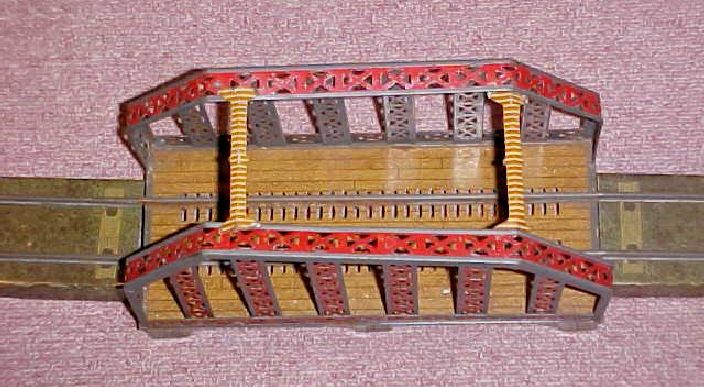

Circa 1913-15, early red bridge. Entirely painted with early electric snap in track
Based on color and construction this bridge would appear to be from the early 1920s.
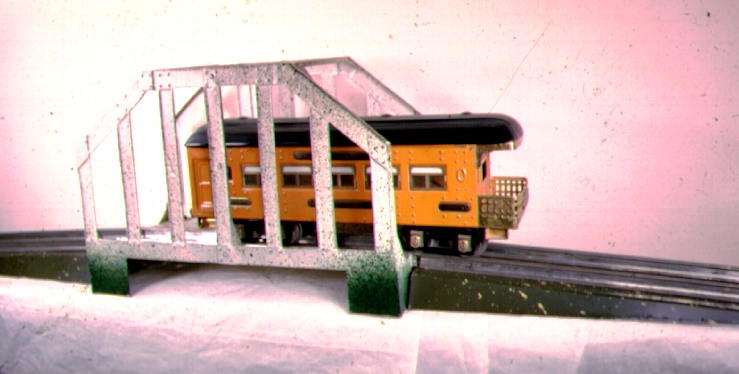
Circa 1915-1922 - No. 98 Bridge. Painted white than sprayed with green. Girders are now solid. Below is the same bridge except it has windup track - this was the color that Ives called Mottled Gray.
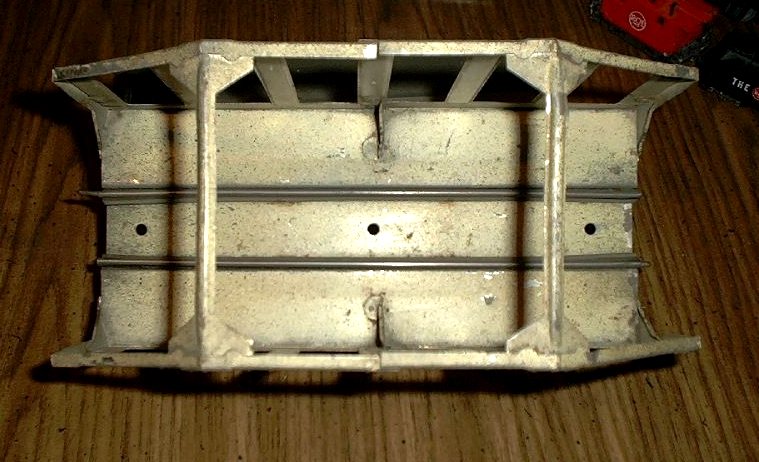
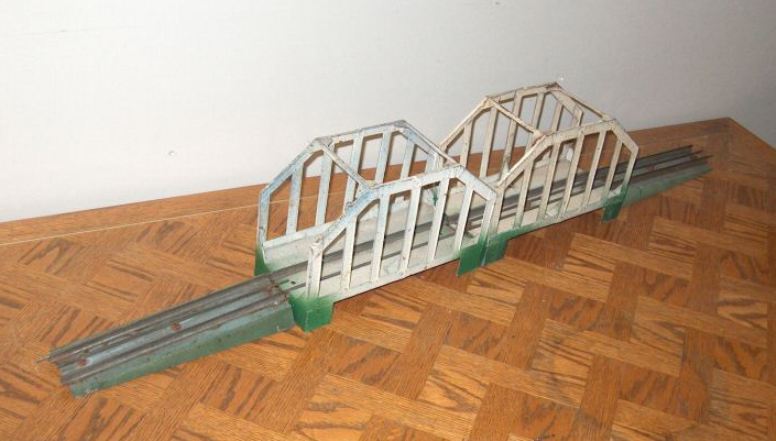
Another example with the mottled gray finish - this one is a No. 99 with the double center span.
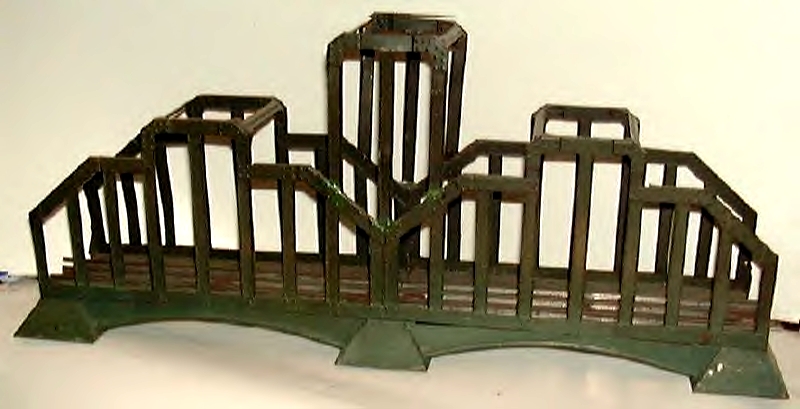
Circa 1915-21 - The green example above is actually a 99-1-3 (1 gauge double bridge for electric track). We've seen Wide gauge bridge that look exactly like this.

Not sure if this one is 1 gauge or wide gauge and I've never been sure if this was the way they were made or it's missing the struts to the center section.
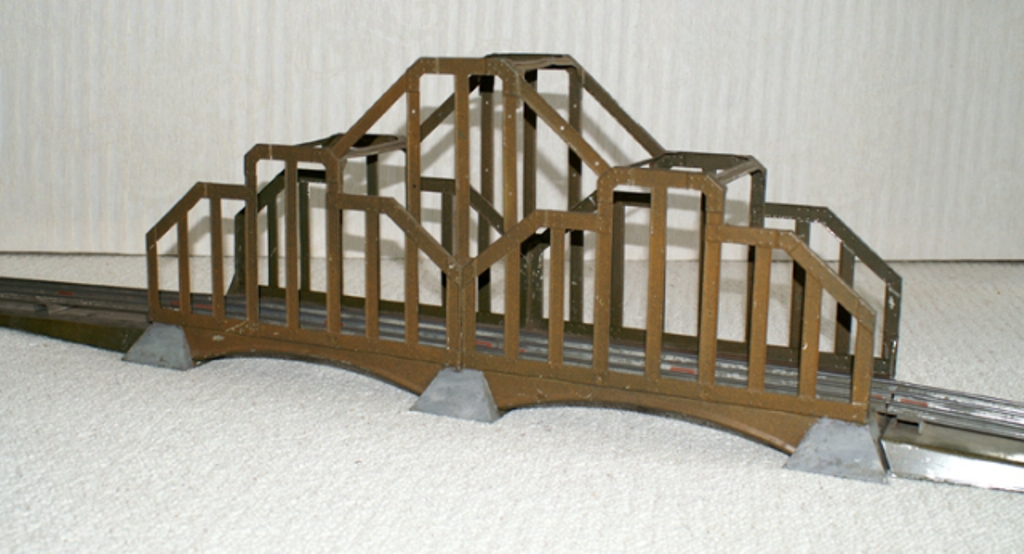
Circa 1921-22 Early wide gauge bridge, olive green, same base as 1 gauge.
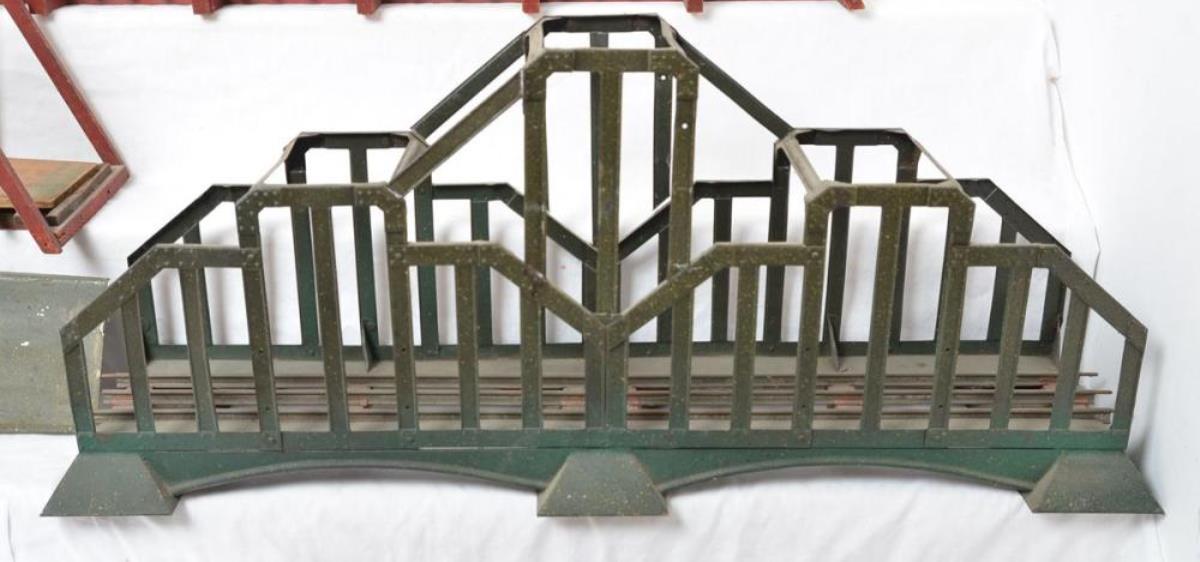
A nice example of early 1920s No. 99-2-3 for electric track.
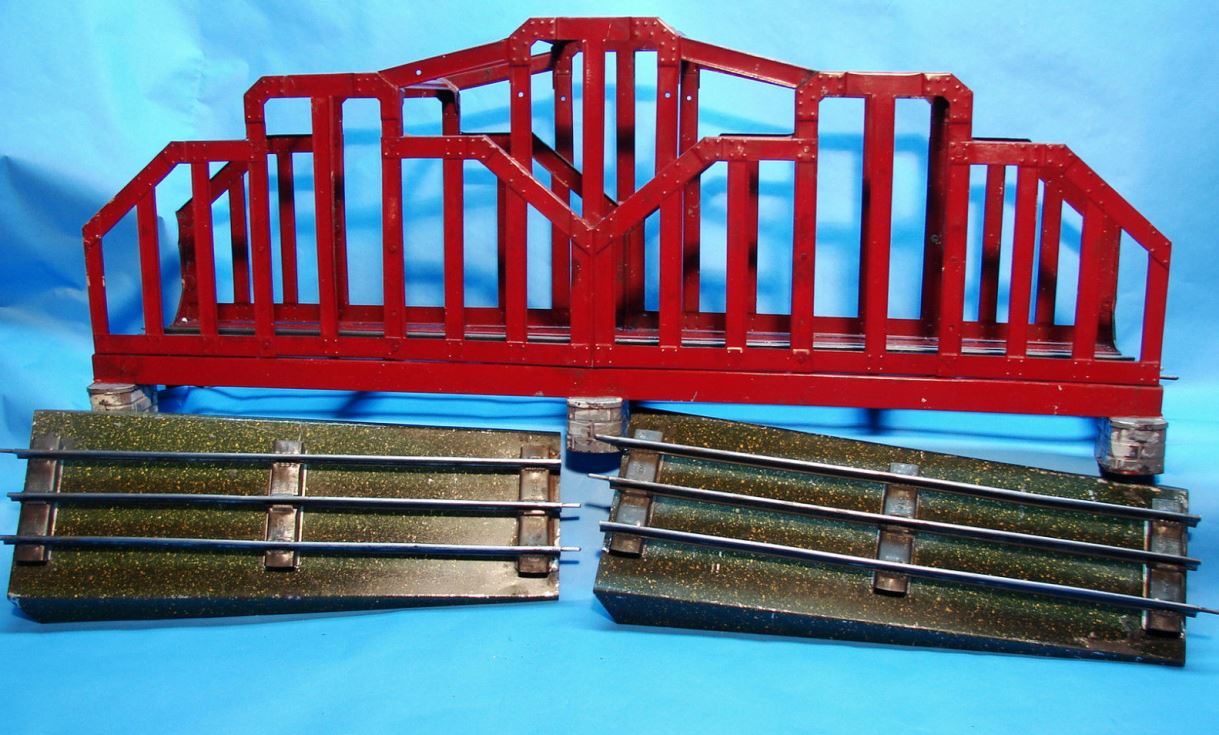
Circa 1923-1927 - This one is wide gauge and painted red, number it 99-2-3. Note the simulated concrete bridge piers. Below same bridge in box.
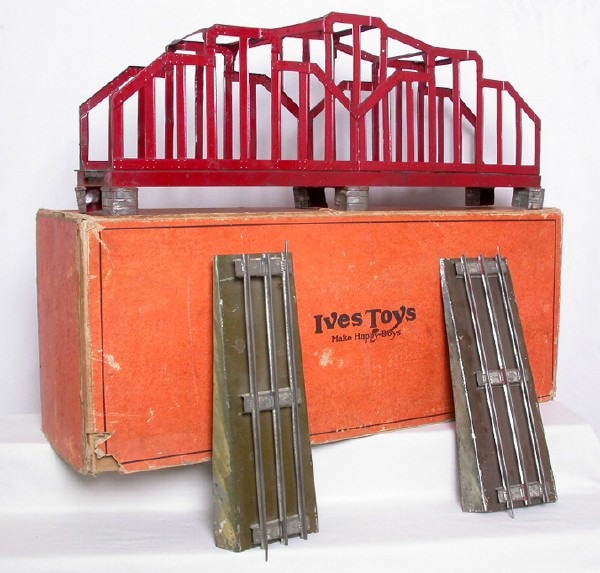
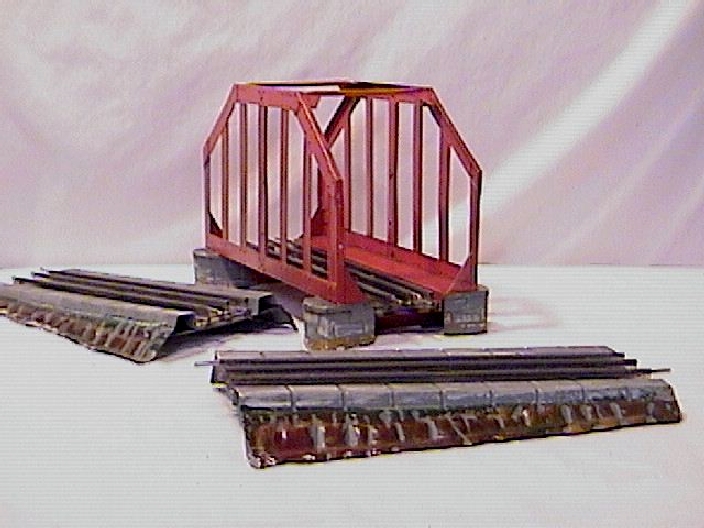
Circa 1923-1930 - This No. 98-3 is painted red and has a simulated concrete base. The bridge below is from the same period but would be numbered 99-3
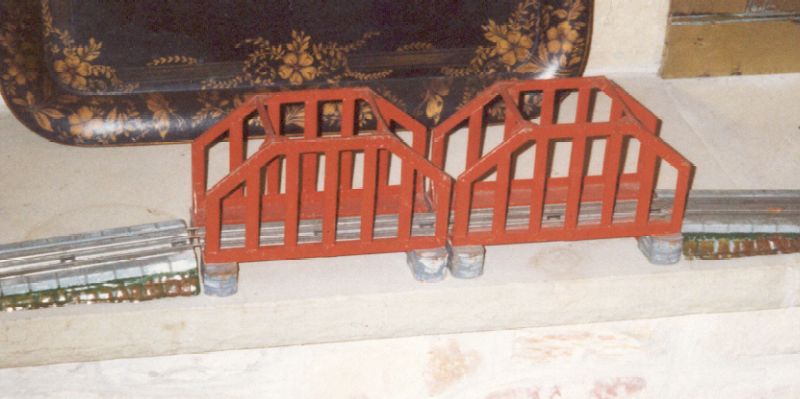
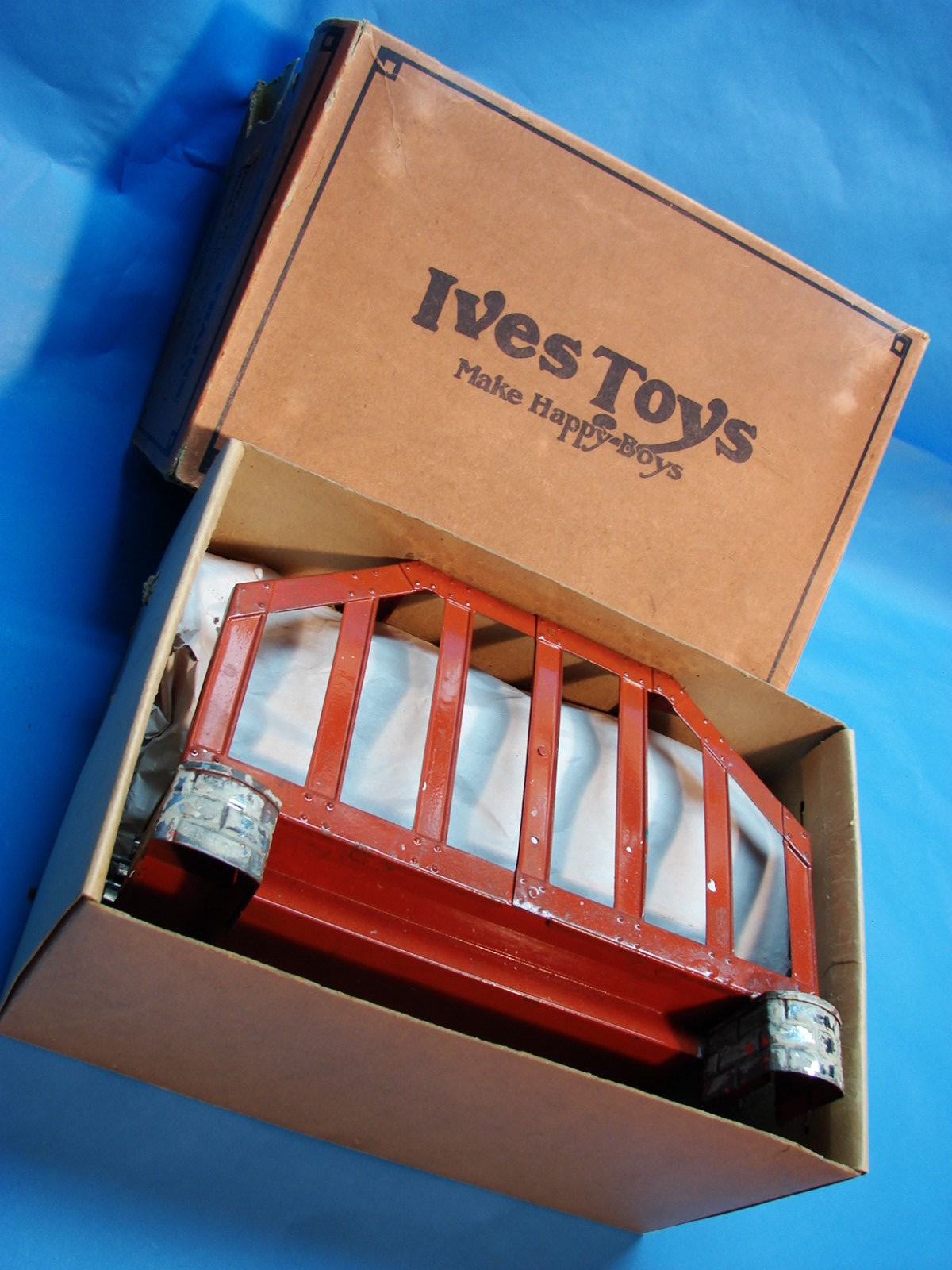
Circa 1925 this is a 98 single bridge in it's original box.
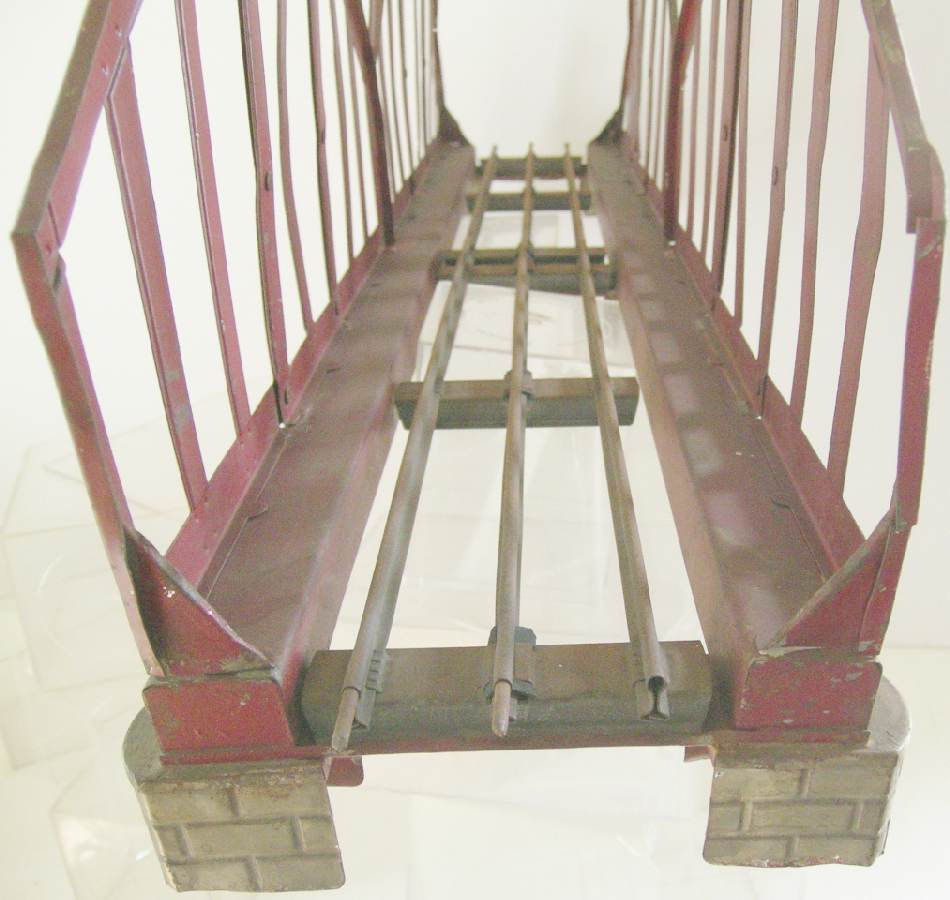
Engineer's view of bridge.
| No. 95, 96, 97 Bridges |
|---|
In 1928 Ives stopped listing the 98-2 bridges and replaced them with the 95(single span), 96(double), 97(Triple). The bridge pictured above and below is a No. 96 bridge, note that it's flat to the ground and actually has two spans that can be separated. We don't have pictures of a No. 95 or No. 97 as we've never seen one. The third picture below shows one of the bridge approaches, it's also flat with no elevation.
Flat approaches used for late wide gauge bridges.
| O Gauge | Locomotives | Passenger | Freight | Trolleys |
| Wide Gauge | Boats | Boxes | Specials | Index |
| One Gauge | Catalogs | Accessories | Wiring | Factory |
